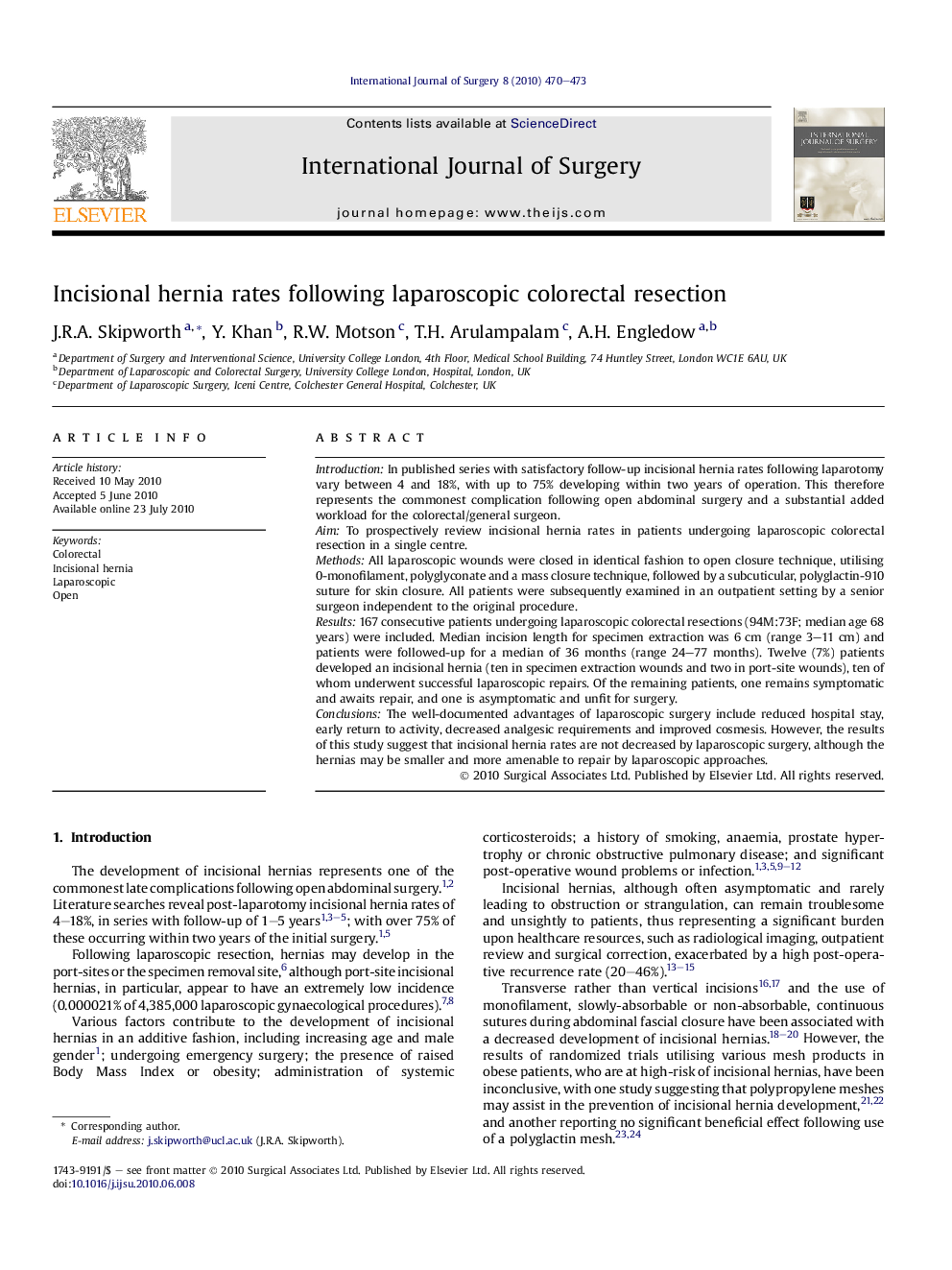| Article ID | Journal | Published Year | Pages | File Type |
|---|---|---|---|---|
| 4287211 | International Journal of Surgery | 2010 | 4 Pages |
IntroductionIn published series with satisfactory follow-up incisional hernia rates following laparotomy vary between 4 and 18%, with up to 75% developing within two years of operation. This therefore represents the commonest complication following open abdominal surgery and a substantial added workload for the colorectal/general surgeon.AimTo prospectively review incisional hernia rates in patients undergoing laparoscopic colorectal resection in a single centre.MethodsAll laparoscopic wounds were closed in identical fashion to open closure technique, utilising 0-monofilament, polyglyconate and a mass closure technique, followed by a subcuticular, polyglactin-910 suture for skin closure. All patients were subsequently examined in an outpatient setting by a senior surgeon independent to the original procedure.Results167 consecutive patients undergoing laparoscopic colorectal resections (94M:73F; median age 68 years) were included. Median incision length for specimen extraction was 6 cm (range 3–11 cm) and patients were followed-up for a median of 36 months (range 24–77 months). Twelve (7%) patients developed an incisional hernia (ten in specimen extraction wounds and two in port-site wounds), ten of whom underwent successful laparoscopic repairs. Of the remaining patients, one remains symptomatic and awaits repair, and one is asymptomatic and unfit for surgery.ConclusionsThe well-documented advantages of laparoscopic surgery include reduced hospital stay, early return to activity, decreased analgesic requirements and improved cosmesis. However, the results of this study suggest that incisional hernia rates are not decreased by laparoscopic surgery, although the hernias may be smaller and more amenable to repair by laparoscopic approaches.
